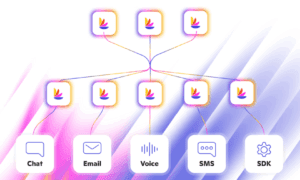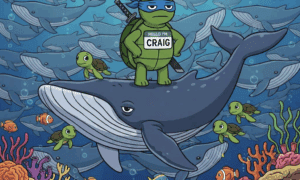Welcome to our blog, where we unravel the mysteries of customer experience (CX) and customer service, helping you understand their unique roles in creating exceptional interactions with your clients. It’s time to set the record straight on something that often causes confusion – CX experience versus customer service. While they may seem synonymous at first glance, we’re here to reveal the nuances and distinctions between these two vital components of any successful business. So buckle up as we embark on a journey through the realm of CX and customer service, discovering how they work together harmoniously but play vastly different roles in shaping unforgettable experiences for your customers.
Introduction to CX and Customer Service
Customer experience (CX) and customer service are often used interchangeably, but they are two very different things. CX is the overall experience a customer has with a company, from the first interaction to the final purchase. Customer service, on the other hand, is just one part of the customer experience. It’s the direct interaction between a company and its customers, usually to solve a problem or answer a question.
Think of it this way: CX is the big picture, and customer service is one piece of that puzzle. Both are important, but they have different goals. CX is about creating a positive overall experience that keeps customers coming back, while customer service is about solving problems and providing immediate assistance.
There are several touchpoints that make up the customer experience, including advertising, product design, packaging, shipping, returns, customer service, and more. Every step of the way, businesses have an opportunity to make a good impression—or turn off potential customers entirely.
To create a great CX, businesses need to take a holistic view of the entire customer journey and identify opportunities to improve at every stage. They should also constantly be collecting feedback from customers so they can understand what’s working well and what needs to be changed.
Customer service is just one part of the equation, but it’s an important one. Businesses need to make sure they’re providing prompt, helpful assistance when problems arise. They should also have systems in place to prevent issues from occurring in the first place.
What is CX Experience?
The customer experience (CX) is the sum of all interactions a customer has with a company. This includes everything from awareness and discovery to consideration and purchase, and post-purchase support. The CX experience goes beyond just customer service, although that is certainly a part of it.
A great CX experience is one that’s seamless, convenient, and satisfying for customers. It’s about providing the right information at the right time, in the right format, and making it easy for customers to do business with you.
A bad CX experience can be frustrating, confusing, and even infuriating. It can make customers feel like they’re not valued or that their business isn’t important to you. In extreme cases, it can cause them to take their business elsewhere.
So, what’s the difference between CX and customer service? Customer service is just one part of the overall customer experience. While it’s important to have friendly and helpful customer service representatives, they can only do so much if the rest of the CX is lacking. To create a great CX experience, you need to focus on the entire journey your customers take – from start to finish – and make sure every step along the way is as smooth as possible.
What is Customer Service?
Customer service is the act of providing support to customers before, during, and after they purchase a product or service. It can include everything from handling customer inquiries and complaints to providing technical support and product information.
The goal of customer service is to ensure that customers have a positive experience with a company and its products or services. Good customer service can build brand loyalty and lead to repeat business.
There are many touchpoints where customer service can be provided, such as in-person at a retail store, over the phone, through email or live chat on a website, or even via social media. And it’s not just businesses that provide customer service—government agencies and other organizations do as well.
In today’s world, customers expect more than just good customer service; they want an excellent customer experience (CX). A great CX goes beyond meeting the basic needs of customers; it creates an emotional connection that leads to long-term loyalty. To deliver an excellent CX, businesses need to understand the difference between customer service and CX and focus on creating positive experiences at every touchpoint.
The Difference Between CX and Customer Service
When it comes to customer service, there is a big difference between customer experience (CX) and traditional customer service. CX is about creating a positive customer journey and ensuring that every interaction a customer has with your company is seamless, efficient, and satisfying. On the other hand, customer service is more narrowly focused on solving problems and providing support when things go wrong.
While both CX and customer service are important for businesses, they serve different purposes. CX is focused on preventing problems from happening in the first place, while customer service is focused on solving them after they occur. By investing in both CX and customer service, businesses can provide a better overall experience for their customers.
How to Measure Success in CX and Customer Service
When it comes to providing excellent customer service, there are a few key metrics you can use to measure success. Here are a few of the most important:
Customer Satisfaction (CSAT)– This measures how satisfied customers are with the service they received. A high CSAT score means that customers are happy with the service they received and are likely to recommend your business to others.
Net Promoter Score® (NPS)– This measures how likely customers are to recommend your business to others. A high NPS score means that customers are very satisfied with your customer service and are more likely to continue doing business with you in the future.
Customer Effort Score (CES)– This measures how easy it is for customers to get the help they need from your customer service team. A low CES score means that customers find it easy to get help when they need it, which leads to satisfaction and loyalty.
First Call Resolution (FCR)– This measures how often customer service calls are resolved on the first call. A high FCR rate means that customers don’t have to wait on hold or call back multiple times to get their issue resolved, leading to happier customers overall.
Average Handle Time (AHT)– This measures how long it takes for customer service representatives to resolve an issue. A shorter AHT indicates efficient customer service and can lead to higher satisfaction scores overall.
Implementing Strategies for Better CX and Customer Service
It’s no secret that today’s consumers are more demanding than ever before. They expect a seamless, personalized experience from the brands they do business with – and they’re not afraid to take their business elsewhere if they don’t get it.
That’s why it’s more important than ever for brands to focus on delivering an exceptional customer experience (CX). But what exactly is CX, and how is it different from customer service?
Simply put, CX is the sum total of all the interactions a customer has with a brand – from pre-purchase research to post-purchase follow-up. It encompasses everything from the way a company’s website looks and feels to the way its employees interact with customers on the phone or in person.
In contrast, customer service is just one piece of the CX puzzle. It’s the direct interaction between a customer and a
company that happens after the purchase has been made. This could include things like troubleshooting a product issue or handling returns/exchanges.
To deliver an exceptional CX, brands need to take a holistic view of the customer journey and identify opportunities for improvement at every touchpoint. Here are a few tips:
Make sure your website is user-friendly and informative. Customers should be able to easily find what they’re looking for, without having to search through endless pages of content.
Best Practices for CX and Customer Service
CX and customer service may seem like similar concepts, but there are some important distinctions between the two. CX refers to the overall customer experience, while customer service is just one part of that experience. To provide the best possible CX, businesses need to focus on creating a seamless customer journey and ensuring that each touchpoint is positive.
Some best practices for providing an excellent CX include:
- Identifying key customer journeys and mapping them out.
- Analyzing customer feedback to identify pain points and areas for improvement.
- Creating personalized experiences based on customer data and preferences.
- Constantly testing and iterating to improve the customer experience.
- Using technology to automate repetitive tasks and free up time for human interaction.
Customer service is an important part of the CX, but it’s not the only thing that matters. By focusing on creating a great overall experience for customers, businesses can set themselves apart from the competition.
Conclusion
We hope this article has given you a better understanding of the differences between CX experience and customer service. CX experience focuses on creating positive experiences from start to finish, while customer service is more focused on resolving issues efficiently and competently. Both are important in providing customers with the best overall experience possible. The key takeaway here is that both elements should work together as part of an organization’s overarching mission to provide excellent customer experiences.



































